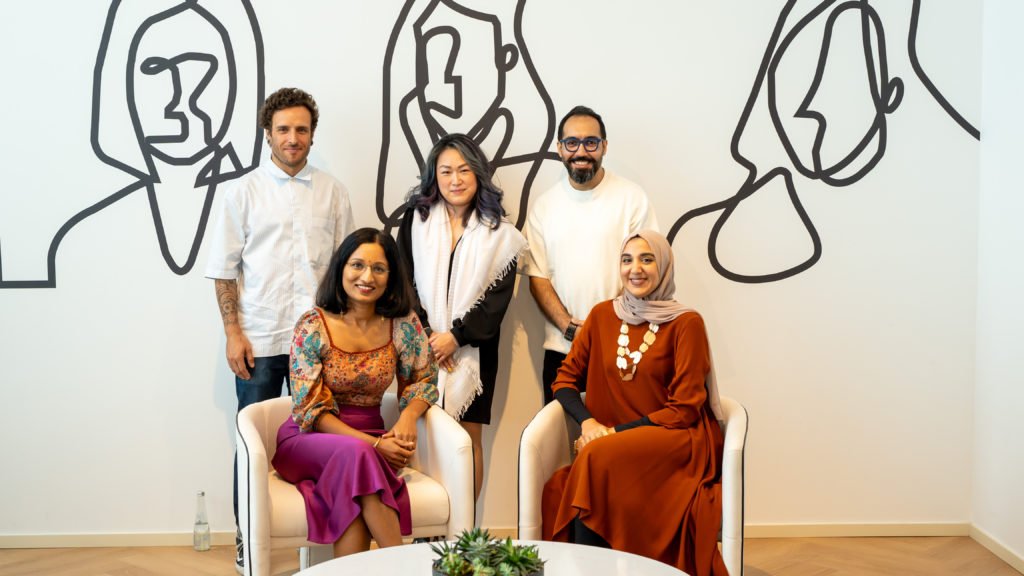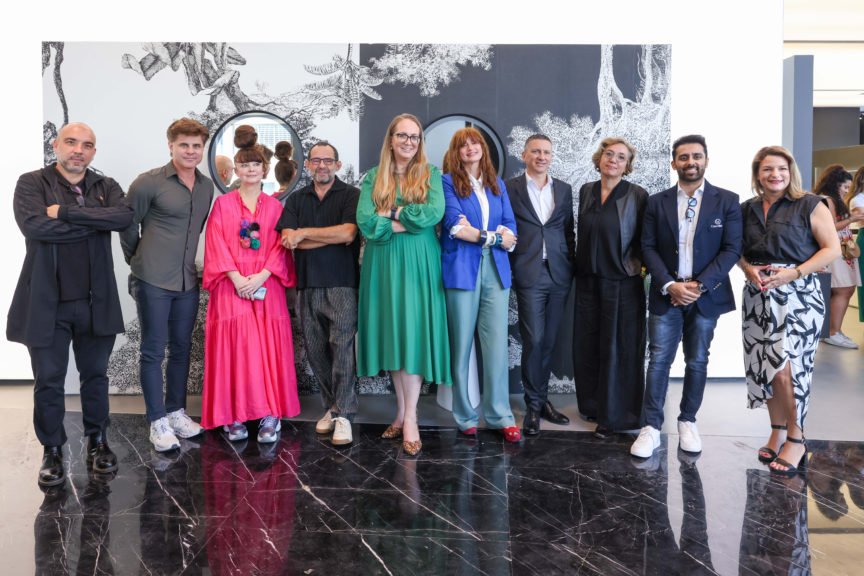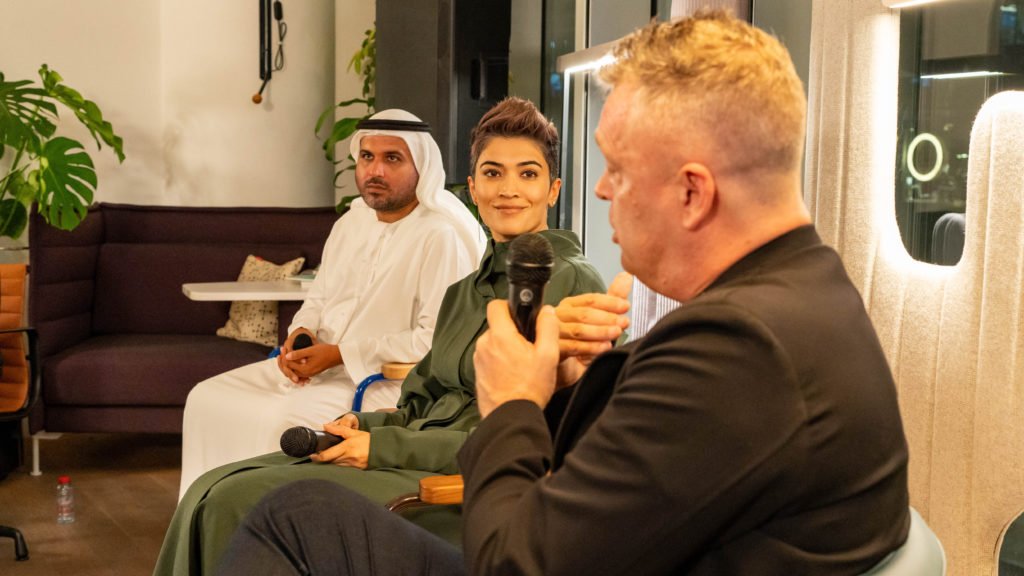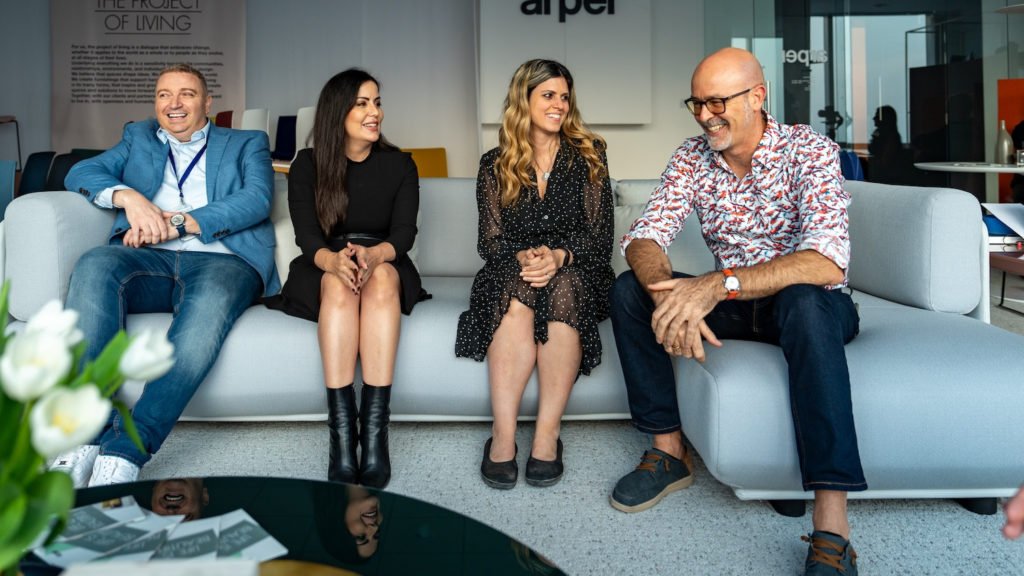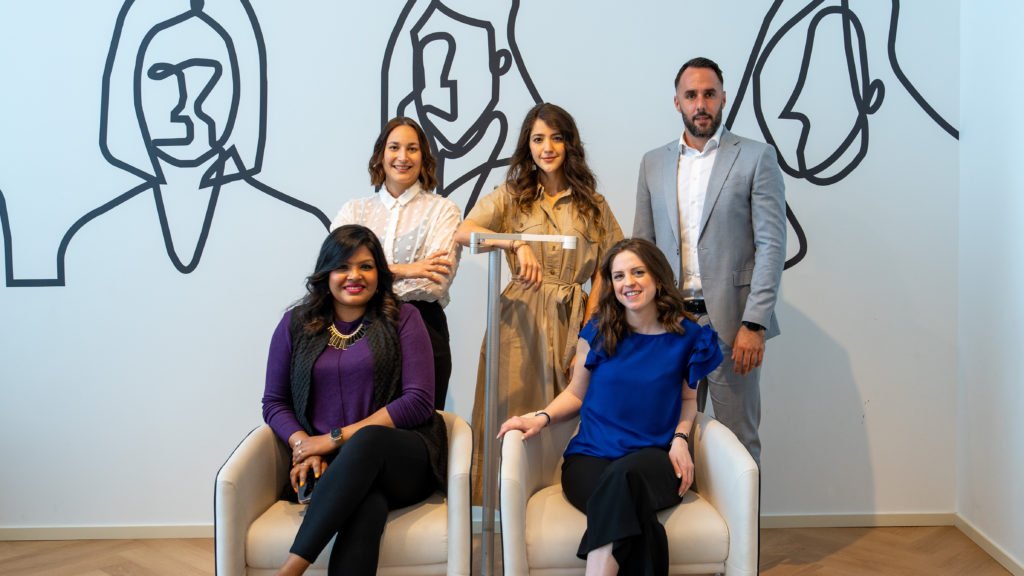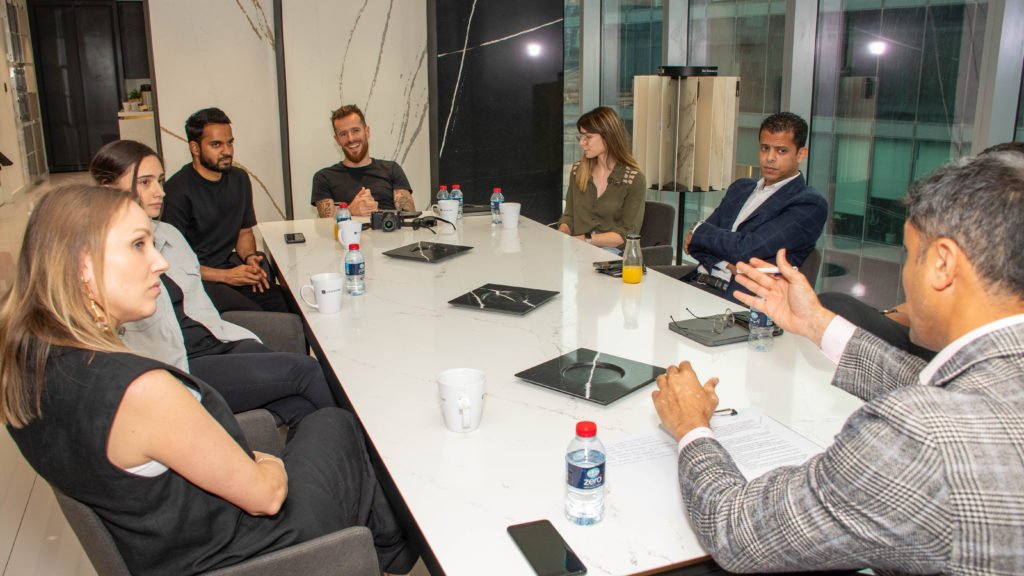With the corporate shift to WFH (Work From Home) or even WFE (Work From Everywhere), it didn’t take long for manufacturers and product designers to follow suit, beginning a new wave of furniture trends that are flexible in use, flexible in functionality, practical, and resilient to changing trends. It also sparked a conversation on the multidimensional nature of the workplace – it could be your laptop, bag, car, or a completely autonomous unit that can travel with you anywhere, even when you are on a holiday. So what is this new workspace?
In this roundtable, in collaboration with Interstuhl, we chat with experts from the A&D and build sector on the new meaning of workspace, and how designers and manufacturers are rising to the challenge of the changing status quo.
THE EXPERTS
From left to right: Adriana Graur, Design Director, dwp; Patrick Loechle, Vice President Marketing & Product Management, Interstuhl; Soren Kraen, Owner and Founder, Xworks Interiors; Sven von Boetticher, Designer and Founder, ID AID Design Studio; Keenan Grote, Chief Operating Officer, PMKConsult
Changing Mindsets
‘So what is a workspace, today?’, we ask our experts.
“I was working from my car today through my laptop, and got a decent amount of work done before even entering the office,” says Adriana Graur, Design Director at dwp. Which makes us wonder, do we need to revisit the traditional definition of a workspace?
Adriana tells us that we have to first change our mindsets and start thinking differently. “What traditional workspaces did really well helped is help with boundaries. We’re all well aware that you can work from anywhere from now, but that doesn’t mean it’s a good thing. We’ve had to get used to it. We don’t have the products and spaces that fully embrace or support this today. Yes, we love the flexibility, but what’s ended up happening is that we don’t know when to stop, and we just go on working because our homes and offices have fused. So we have to start thinking about how we can incorporate the flexibility of work from home with the benefits an office would provide. To be able to give ourselves that work life balance, but also make our boundaries flexible and not be married to the 9 to 5 thinking. That requires a change in mindset.”
Patrick Loechle, Vice President Marketing & Product Management at Interstuhl, gives us his perspective. “We’re at an interesting point in time where we have realised the true value of a workspace. It’s not just a place to have people work 9 to 5. It has to facilitate productive work, collaboration, social interaction, and as of the current situation, health and safety as well. It has to be multidimensional. For my team, it’s very important that they can work from home, but equally important for me is to bring back that spontaneous interaction. Something as simple as having a discussion over coffee can lead to an amazing idea, which was not on the agenda before.
Keenan Grote, Chief Operating Officer of project management firm, PMKConsult, adds, “If it weren’t for the available technologies during this pandemic, I think it would have been extraordinarily challenging to switch to remote working. I don’t believe that this flexible or work from home paradigm shift is purely a result of the pandemic. The pandemic may have accelerated it, but it was in motion long before this. Large international companies were already adopting this method. I don’t believe it’s a trend, and I don’t think that we’re ever going back to the traditional way of working. If you look at all the metrics, having smaller footprints from a real estate perspective, but still being able to work not only within that environment but elsewhere is so beneficial. But it is also very important to have that physical space, because we are by nature social creatures. So it’s definitely a positive shift overall.”
There’s always another side to these discussions. “Personally, I need people around me, that’s how I operate,” says Soren Kraen, Owner and Founder of fit-out company, Xworks Interiors. “But realistically, it depends a lot on the kind of work you do. A lawyer or a chartered accountant can work very much on their own. But work that requires collaboration is difficult to do on Zoom. The situation is also not the same for everyone. The type of space matters. A lot of people on my team don’t have big houses with extra space to dedicate to a WFH setup. It’s a luxury for so many people. These are considerations we have to take. Also, on a related note, designing commercial spaces is so much fun now. It’s gone way beyond just rows of workstations. We can do so much more”.
A Case For the Physical Office Space
We Need New Spaces and New Products
“People are our biggest assets, and they need the right kind of space to perform well,” says Keenan. “If that means a physical space for my team members who don’t have a great WFH space, then I’m all for investing in a flexible space where they can be their most productive and happiest self. We are a 100% service industry – we literally sell time and experience to clients. Without my staff, I have nothing of value. They are literally the most valuable asset and cost to me, and ensuring their wellbeing is paramount. So what we’ve looked at doing is providing a physical place for the collaboration. They thrive in that energy in physical space when working around people. With Zoom, you can only go so far. It doesn’t beat the dynamic of looking at a drawing around a table, or talking strategy in a room.”
“As a designer, and on behalf of a manufacturer, I’m thinking about aspects, such as wellbeing, ergonomics, collaboration, etc. but at the end of the day, I do have to produce a tangible product,” Sven von Boetticher, Designer and Founder of ID AID Design Studio. “That is a more realistic way in which we can support people.”
In this discussion of a new paradigm of working, Keenan poses a thought-provoking question. “Is ergonomics as important as we thought it was?” Ergonomics is something that is essential for prolonged positioning within a chair. But in the new multidimensional environment that we’re talking about, there’s a lot of movement. It’s movement from location to location, it’s movement around an office. “A lot of the workspaces being designed are multifunctional workspaces intended to promote staff moving around that physical environment and collaborating. So I’m wondering if this is going to change the way manufacturers design products.”
Patrick opines that we have to think differently, but ergonomics still plays a major role. “There are still people who will need to work eight hours straight with their heads down. Ergonomics is important for people like that. But on the other hand, people don’t want a boring black task chair in their home environment, because they want something more tasteful. So we have to think along these lines now. We also have to look at services from a wellbeing perspective. We need to leave our past behind us and start thinking in a completely different direction. Why should we not, for example, manufacture a bag that takes you from co-working to working at home, or the right screen holder for when you are conferencing in the car?”
“In the end, these are also ergonomic solutions,” adds Sven. “Because ergonomics is not just focused on the chair, but also height adjustable and flexible tables also factor. Or how to get that iPhone in my car at the right position so I don’t strain my neck.”
“I think clients need to change their mindset and invest as well,” adds Soren. “One thing that really surprises me time and again is when I get a huge international company as a client, and I research their corporate identity and design guidelines. I take a look at what their offices look like in London or New York. And I see that they’re spending money in the right places, looking at economics and sustainability. However, for this region, their budgets are quite low. We should try to push them to think differently about this region too, because all it takes is about 10 to 15 percent addition to the bottom line, and the result is incredible in terms of high quality design and sustainable products, resulting in a better workspace.”
Longevity, flexibility, reusability – true sustainability is all about this
What Do New Products and Spaces Look Like?
“For starters, we need to redefine a lot of our previous thought processes, like sustainability for example,” advises Adriana, stressing the need to reexamine what it actually means to make a great product. “For example, we should look at the holistic nature of the product, and not just the sustainability of the raw materials. We should look at the product life expectancy. If it will last me 20 years, even if it’s plastic, then it’s better to use that instead of something that is built with sustainable materials but would need to be replaced every five years. Sure, it might be biodegradable and won’t contribute to landfill, but at least we’re not producing more.”
“We also need to design with wellbeing in mind,” says Patrick. “Everything we’ve been designing so far has been to maximise productivity from a work perspective. But things are changing and it’s very interesting. For example, we have so many chairs now that offer power outlets. I know we can do better and be more innovative.”
“Such a huge part of this comes down to leadership within the organisations,” says Keenan. “I’ve had a number of conversations similar to this in the last two years, about how I was a business owner, and as a leader, I too was adapting to this new normal. But for me, it really wasn’t that far outside my comfort zone, because the nature of my business was always to have a large portion of my team working remotely. So that wasn’t really something that I needed to adjust or adapt to. But there are a number of businesses for whom this style of working is completely new, and they have to adapt and be able to continue to change their overview or their understanding of what the traditional office space should look like. I think those have probably been more successful throughout this. And by success, I don’t necessarily just mean by the bottom line, but by being successful in having a team that has dealt well throughout the pandemic.”
Patrick gives us a truly unique perspective. “Imagine office spaces working in the same manner as Airbnb where you book spaces in various locations, and then it starts to get really interesting. You start to focus on individual experiences for each space, and what we need as a culture to get there. Which leads to new leadership roles.”
Adriana adds, “There are some companies that offer different smaller spaces dotted within one city – some in the city centre, some in the outskirts, and you can just pick the location that is the most convenient to your schedule for the day”.
Sven believes that the current landscape of flexi working is akin to the Wild West. “It’s totally free and a little bit chaotic, where you’re working in the kitchen with your child, but it still works! But what I sincerely hope for is that any future changes come from people embracing a new mindset of working, and not solutions forced by another pandemic.”

